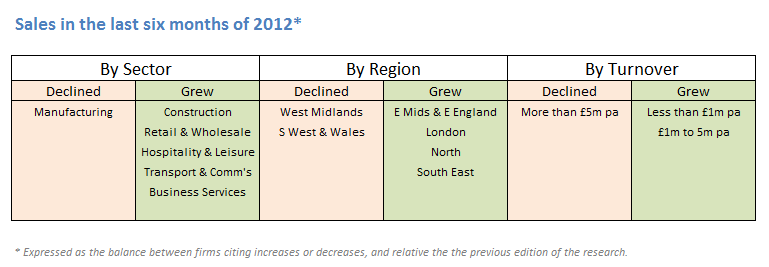Understanding how decision makers in large companies decide on a short-list of candidate vendors can be a big advantage for a small or medium sized firm. This article explains the content they find most valuable, how important they find social media, and even when they want to be contacted. Your window of opportunity is just six days!
Large enterprises (LE) represent an attractive sales target for small and medium sized businesses. A recent study by IDG looked at how IT decision makers in LE’s go about making purchasing decisions. The findings offer small firms a real opportunity to be in the right place, at the right time, with the right proposition.
IDG asked 1025 decision makers what type of information they found most valuable when searching online to solve a problem or when looking for a new product or service. Here’s what they found:
Articles, reviews and case studies came top of the list, with brochures and other content likely to be on your website not far behind. So, content is king if you want to attract the interest of large enterprise buyers.
Interestingly, IDG also found that IT decision makers appear ready to be contacted by a prospective vendor after they have downloaded two or more items from a web site. Not only that, but they would prefer to be contacted within six days of making an additional download.
This represents a clear signal of interest that all firms will want to be aware of. No doubt, as a small business owner, you will want to have this trigger embedded within your internal lead management process. But how?
In truth, this is a real dilemma for many firms. Unless you use some form of marketing automation system, you will need to “gate” or put a form in front of the download process. The details on the form will identify who is downloading. Consequently, using the form, you can track when a prospective buyer has downloaded more items from your website.
However, expert opinion suggests that putting any form filling in front of a download will significantly reduce the number of people that actually go on to make the download. Instead, they will find other web sites where access to articles and case studies are unencumbered. You will effectively loose that prospect.
The answer is to do the following:
- Make your downloadable content free to access.
- Write your content in such a way that it compels serious prospects to complete a form linked within the content itself.
This will require a little creativity: perhaps a small promotion or access to a no-obligation ROI tool, etc. The skill of the copywriter is the key ingredient. Consider using a professional copywriter to create or edit your content if you don’t have these skills in-house.
How IT Decision Makers use Social Networks
The IDG study also identified the extent to which IT decision makers turned to social networks as part of their quest for information. Not only do they use social platforms for networking and career enhancement, but many use them to discover, share and discuss technical information and seek answers to problems.Linkedin was used by 72% of the IT decision makers surveyed, but the main purpose was for career progression. When they wanted to find technical information, the top three platforms they turned to were:
- Twitter (59%)
- Google Plus (54%)
- Facebook (50%)
At least that was the case in May 2012 when the study was undertaken. Interestingly, IDG also identified what decision makers claimed to use social media (including Linkedin) for. Here’s what they found:
- 73% - to engage with a technical vendor
- 44% - to stay up to date with industry trends
- 38% - to find reviews and recommendations
- 35% - to find information to aid decision making
Clearly, if you are targeting IT decision makers, it’s important that you are visible on social media and that you can interlink content between your web site and social platforms. As social media becomes more generally accepted, it’s likely that prospective buyers across all industries will use these platforms to find potential suppliers. Some will use social platforms as much as they will use a Google search. Indeed, having a presence on social media platforms is likely to improve your search engine ranking.
Many firms are not yet ready to fully embrace social media. However, if you want to sell to large organisations, you need to ensure that your sales and marketing content is organised and freely available for when prospects come looking. Having professionally written articles, case studies, blogs and product literature will go a long way in positively influencing your prospects and help to get your business on the short list.
:::::::::::::::::::::::::::::::
Freelance business copywriting and blog ghost writing for SMEs












